Ambition, Greed And Death: The Roman Roots Of ‘Game Of Thrones’
AncientPages.com - Although the universe of Game of Thrones is steeped in a medieval atmosphere, several of the central in the series – Daenerys Targaryen, Joffrey Baratheon and Jon Snow – seem directly inspired by characters from Roman antiquity.
George R.R. Martin, author of the novels behind the hit HBO series, has affirmed that the history of the Roman Empire was one of his sources of inspiration. Indeed, it was the 117km wall that the Emperor Hadrian had built in the north of England in the years 120 AD that gave him the idea of the Wall.
Daenerys Targaryen as portrayed by actress Emilia Clarke. HBO
Martin tells of visiting the site one autumn evening: the sun was setting and it was getting cold. After the departure of the last tourists, the novelist said he felt the loneliness and homesickness of the Roman legionaries posted there 2,000 years ago.
Of course, the author’s imagination has transformed Hadrian’s Wall into an immense barrier of ice in the Game of Thrones saga. At 200 meters high, Martin’s Wall is worlds away on Hadrian’s fortification, but its function remains the same as that in Antiquity: to preserve the “civilized” world from a formidable external threat.
To breathe life into his fictional characters, Martin was able to exploit and adapt elements found in the work of ancient historians, including Suetonius, Tacitus and Dio Cassius. He also drew inspiration from the landmark television series I, Claudius (BBC, 1976), and Rome (2005-2007).
Like Game of Thrones, the HBO series Rome featured abundant violence and cruelty that was intimately linked to the political sphere, the ambitions of its leaders and their thirst for domination.
Three atrocious deaths
In 60 BC, three powerful men concluded a secret alliance to jointly control the Roman Empire: the military leader Pompey the Great, the rich Crassus, and the ambitious Julius Caesar, who dreamed of turning the Republic into a monarchy. The members of this triumvirate will each experience a violent and atrocious death.
Crassus, who thought he could defeat with the Parthians, enemies to the east of Rome, was defeated at the Battle of Carrhae in 53 BC. According to a tradition reported by Dio Cassius (Roman History 40.27), after Crassus’ death, the victors pour molten gold into his mouth as a symbolic punishment for his inexhaustible greed. Viserys Targaryen will suffer a similar punishment.
After being defeated at the Battle of Pharsalus in 48 BC, Pompey fled to Egypt, where he was decapitated – like Eddard Stark](https://time.com/5203015/sean-bean-ned-stark-beheading-praying/). Four years later, Julius Caesar is stabbed to death by a group of traitors, including his adopted son Brutus. “You too, my son,” would be Caesar’s last words. In the same way, Jon Snow will be the victim of a conspiracy hatched by his entourage. The young Olly, playing the role of Brutus, carries out the coup de grace.
Jon Snow: Jesus meets Caesar
After his death, Julius Caesar, the idol of the lower classes, is deified and a temple is dedicated to him on the Roman Forum. Jon Snow follows the model of Jesus, another historical figure of the Roman era. By his physical appearance alone, Snow is clearly in the tradition of Christian iconography. His politico-military aspect is modeled on Caesar, however: Snow possesses the charisma and virtues of the ideal leader who puts himself at the head and in the service of his people.
The character of Jon Snow (played by Kit Harington) mixes aspects of the Roman-era figures Julius Caesar and Jesus. HBO
Game of Thrones also contains several adaptations of political characters from imperial Rome. In contrast to Julius Caesar, a positive figure, Caligula, the third Roman emperor, represents the delusional Caesar. Suetonius, author of the Life of the Twelve Caesars, portrays a tyrant as violent as it is unpredictable. Caligula has three major characteristics: he is young, cruel and crazy.
The resemblance of Caligula to Joffrey Baratheon is striking, both in terms of his character and physical appearance. Even the hair of actor Jack Gleeson is styled in the same way as the emperor on his official portraits.
Caligula (marble head, Ny Carlsberg Glyptotek, Copenhagen) and Joffrey Baratheon performed by Jack Gleeson (Game of Thrones, HBO). Author provided
Caligula had previously been portrayed on screen in 1979 by Malcolm McDowell in Tinto Brass’s Caligula. The notorious film added an erotic and cruel aspect to the classic Roman sword-and-sandal epic, prefiguring Rome and Game of Thrones.
The historian Suetonius stated that Caligula had incestuous relations with his sister Drusilla. In Game of Thrones, a forbidden love links Cersei to her brother Jaime. Cersei also resembles the empress Agrippina, a cunning and unscrupulous figure who wanted to reign through her son Nero. He became emperor at the age of just 17, a young man like Tommen.
See also:
Roman Consuls Seized Power Through Intimidation, Bribery And Show Business
Melisandre, The Red Woman: The History Behind Game Of Thrones’ Mysterious Mystic
Queen Mavia And The Tanukhids Launched A Massive Revolt Against Romans – But Why?
Claudius, the uncle of Caligula, was scorned in his youth because of physical disabilities and was dismissed as an idiot. His own mother called him a man “unfinished by nature”, yet he revealed a great political finesse, as does Tyrion Lannister in Game of Thrones. Caligula-Joffrey and Claudius-Tyrion, the nephew and the uncle, form a contradictory pair: on one side the cruel young sovereign, on the other, the intelligent man unjustly denigrated because of his physical appearance. Do not be fooled by appearances.
From Boudica to Daenerys
Boudica or Boadicea (circa 30-61 AD) was a queen of the Icenians, Celtic people of ancient England, near present-day Norfolk. Since the Roman conquest and the transformation of the south of the island into the province of the Empire, the local people, dominated, were treated as slaves by the Roman occupiers. Boudica herself had been beaten and her two daughters raped by legionaries. In 61 AD, she managed to gather a powerful army and led an uprising of the humiliated populations against their foreign masters.
Painting of Queen Boudica (20th century, unknown artist).
The historian Dio Cassius evokes the queen in his Roman history (62.2), emphasizing her feminine power: “She let down her thick, blond hair, down to her lower back”. A warrior, she was armed with a spear and spoke to her troops to exalt them in battle.
Boudica figurines became popular in England from the 19th century, and a statue representing her in a chariot was erected in London near Westminster Bridge. She is the heroine of novels and films, including Legions: The Warriors of Rome (2003). Naturally, any resemblance to Daenerys in Game of Thrones is strictly coincidental.
Written by Christian-Georges Schwentzel - Professeur d'histoire ancienne, Université de Lorraine
This article is republished from The Conversation under a Creative Commons license. Read the original article.
More From Ancient Pages
-
 On This Day In History: Battle Of Dettingen – English Armies Were Victorious Over The French – On June 27, 1743
News | Jun 27, 2016
On This Day In History: Battle Of Dettingen – English Armies Were Victorious Over The French – On June 27, 1743
News | Jun 27, 2016 -
 Viking Ship Found With Unexpected Goods For Unclear Purpose Puzzles Scientists
Vikings | Nov 24, 2024
Viking Ship Found With Unexpected Goods For Unclear Purpose Puzzles Scientists
Vikings | Nov 24, 2024 -
 Tanana Valley, Alaska: Study On Ancient Hunter-Gatherer Sites Dating Back To 14,500 Years Ago
Archaeology | Mar 21, 2022
Tanana Valley, Alaska: Study On Ancient Hunter-Gatherer Sites Dating Back To 14,500 Years Ago
Archaeology | Mar 21, 2022 -
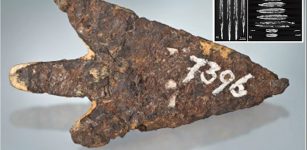 Arrowhead Made Of Meteoritic Iron From The Late Bronze Age Settlement Of Mörigen, Switzerland – Examined
Archaeology | Aug 1, 2023
Arrowhead Made Of Meteoritic Iron From The Late Bronze Age Settlement Of Mörigen, Switzerland – Examined
Archaeology | Aug 1, 2023 -
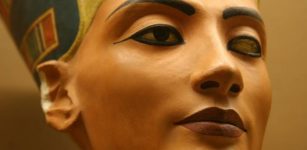 Nefertiti Was A Powerful Queen But Never A Pharaoh – Researcher Says
Archaeology | Jan 23, 2018
Nefertiti Was A Powerful Queen But Never A Pharaoh – Researcher Says
Archaeology | Jan 23, 2018 -
 On This Day In History: Columbus Reached Honduras With His Ships – On July 30, 1502
News | Jul 30, 2016
On This Day In History: Columbus Reached Honduras With His Ships – On July 30, 1502
News | Jul 30, 2016 -
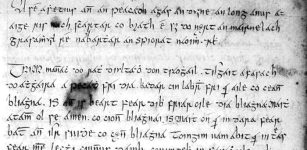 Is This The World’s Oldest Joke?
Featured Stories | Feb 21, 2014
Is This The World’s Oldest Joke?
Featured Stories | Feb 21, 2014 -
 Surprising Discovery Of Oldest Decoratively Carved Wood In Britain
Archaeology | Jun 7, 2023
Surprising Discovery Of Oldest Decoratively Carved Wood In Britain
Archaeology | Jun 7, 2023 -
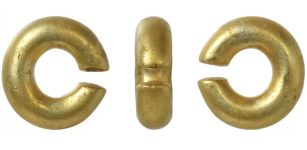 ‘Incredibly Mysterious’ Bronze Age Gold Penannular Ring Found In Norfolk
Archaeology | Apr 24, 2023
‘Incredibly Mysterious’ Bronze Age Gold Penannular Ring Found In Norfolk
Archaeology | Apr 24, 2023 -
 Harappan Civilization Built Massive Protection Walls Against Tsunami 5,000 Years Ago
Archaeology | Jan 10, 2017
Harappan Civilization Built Massive Protection Walls Against Tsunami 5,000 Years Ago
Archaeology | Jan 10, 2017 -
 Unique discovery of unknown inscription may change the history of scripts as we know it.
News | Aug 23, 2015
Unique discovery of unknown inscription may change the history of scripts as we know it.
News | Aug 23, 2015 -
 Why Is The Hungry Ghost Festival Celebrated In August?
Ancient Traditions And Customs | Aug 12, 2019
Why Is The Hungry Ghost Festival Celebrated In August?
Ancient Traditions And Customs | Aug 12, 2019 -
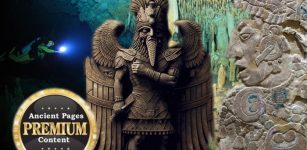 Evidence Of An Unknown Ancient Civilization In The Yucatan?
Featured Stories | Apr 6, 2024
Evidence Of An Unknown Ancient Civilization In The Yucatan?
Featured Stories | Apr 6, 2024 -
 Secret Group Searching For Ancient Giants’ Skeletons In NZ Worries Archaeologists
Archaeology | Mar 19, 2020
Secret Group Searching For Ancient Giants’ Skeletons In NZ Worries Archaeologists
Archaeology | Mar 19, 2020 -
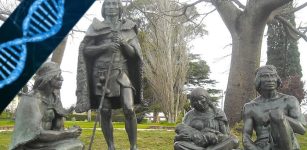 Ancient DNA Sheds Light On ‘Lost’ Indigenous People Of Uruguay And Reveals A Surprising Connection
Archaeology | May 11, 2022
Ancient DNA Sheds Light On ‘Lost’ Indigenous People Of Uruguay And Reveals A Surprising Connection
Archaeology | May 11, 2022 -
 Hiidenkirnut: Spectacular Millennia-Old Devil’s Churns In Finland
Featured Stories | Jan 16, 2017
Hiidenkirnut: Spectacular Millennia-Old Devil’s Churns In Finland
Featured Stories | Jan 16, 2017 -
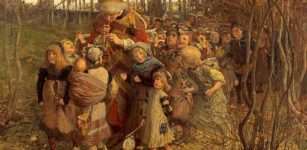 Unraveling The Mystery Behind The Perplexing Story Of Pied Piper Of Hamelin
Featured Stories | Sep 29, 2015
Unraveling The Mystery Behind The Perplexing Story Of Pied Piper Of Hamelin
Featured Stories | Sep 29, 2015 -
 Horses Skinfaxi And Hrimfaxi – Bringers Of Light And Darkness To Earth In Norse Mythology
Featured Stories | Dec 16, 2017
Horses Skinfaxi And Hrimfaxi – Bringers Of Light And Darkness To Earth In Norse Mythology
Featured Stories | Dec 16, 2017 -
 Secrets Of Neanderthals’ 130,000-Year-Old Carved Bear Bone Found In The Carpathian Mountains
Archaeology | May 24, 2024
Secrets Of Neanderthals’ 130,000-Year-Old Carved Bear Bone Found In The Carpathian Mountains
Archaeology | May 24, 2024 -
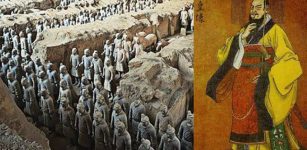 Mysterious History Of Qin Shi Huang – First Emperor Of China
Featured Stories | Jan 17, 2016
Mysterious History Of Qin Shi Huang – First Emperor Of China
Featured Stories | Jan 17, 2016




